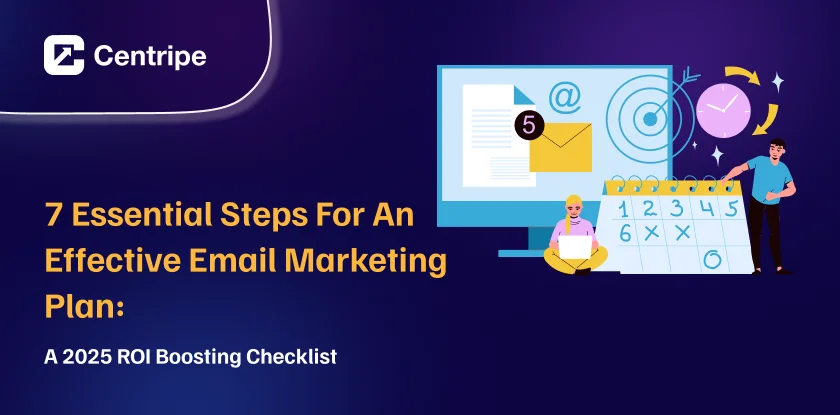Sending emails is easy. But turning them into something that helps your business grow? That takes a plan.
An email marketing plan is a step-by-step guide that shows what your goals are, who your audience is, what kind of emails you’ll send, and how you’ll measure success. It connects your current efforts with your future growth. Without a plan, your emails may feel random and disconnected.
If you plan your emails properly, they can help you talk to people, turn them into customers, and make them trust your business for a long time.
Why Every Business Needs an Email Marketing Plan?
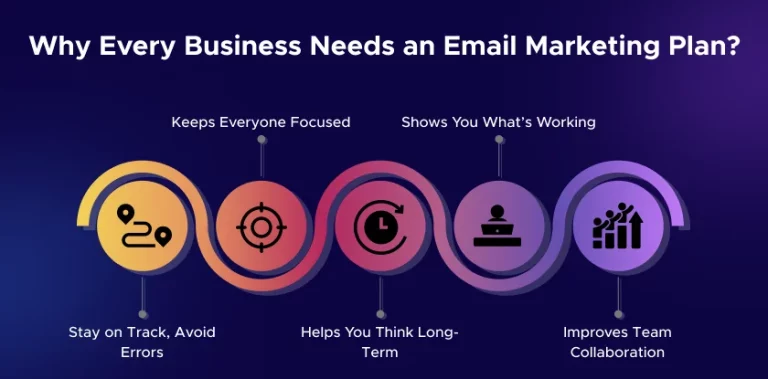
Emailing blindly is the same as driving without a plan. An excellent email plan will keep things organized, goal-oriented, and efficient.
Stay on Track, Avoid Errors
Planning helps you avoid last-minute chaos. Through this, your campaigns will not overlap or miss important dates.
Keeps Everyone Focused
There are a million ways to reach your audience, but not all work. A plan keeps your team focused on what actually drives results.
Helps You Think Long-Term
Email isn’t just about quick clicks. A plan connects your day-to-day efforts with your bigger marketing objectives. In fact, when your email marketing plan aligns with your overall email marketing strategy, you create consistent, measurable growth.
Shows You What’s Working
Planning lets you track success. Your campaigns can be improved by reviewing the results.
Improves Team Collaboration
Whether it’s sales, design, or support, everyone knows their part. A clear plan helps delegate tasks and stay consistent across teams.
How to Create an Email Marketing Plan
Step 1: Conduct a Comprehensive Audit and Research Phase
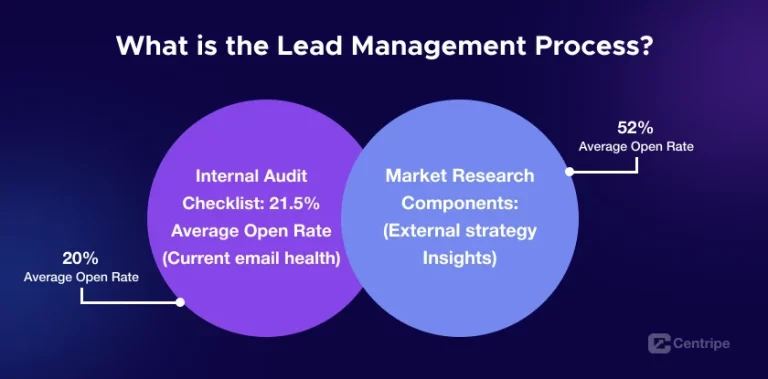
Before you do anything else, figure out where you stand.
Internal Audit Checklist:
- How big is your database? Is it growing or dying?
- What are your current metrics? (Industry average: 21.5% open rate, 2.6% click rate)
- What tech do you have? What’s it missing?
- Who’s on your team? What can they actually handle?
- What content exists? What’s working (be honest)?
Market Research Components:
- What are your competitors doing that’s working?
- What are the benchmarks for your industry?
- What do your customers actually want?
- Are you compliant with all the fun regulations?
Step 2: Why do you need SMART goals in your email plan
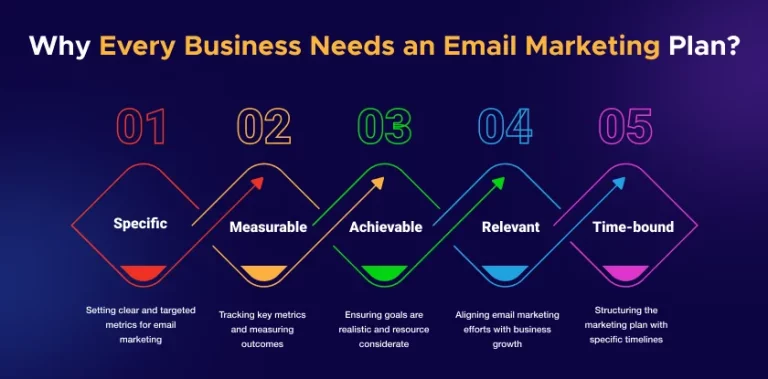
For effective email marketing, you need a clear goal. Such as SMART goals because they are Specific, Measurable, Achievable, Relevant, and Time-bound.
Think about what you want:
Is it more website visits? More sales? Or just building trust with your audience?
Here are a few common goals:
- Grow brand awareness
- Get more clicks and replies
- Keep customers happy
- Win back inactive users
- Collect feedback
Step 3: Define and Segment Your Target Audiences
| Criteria Type | Examples | Use Cases | Expected Lift |
|---|---|---|---|
| Firmographic | Company size, industry, revenue | Initial targeting | 10-15% open rate |
| Behavioral | What they do on your site, Email engagement | Nurture campaigns | 25-30% click rate |
| Lifestyle | Prospect, MQL, customer | stage-specific content | 35% conversion rate |
| Role-Based | Decision maker vs end user | Personalized messaging | 20% reply rate |
| Account-Based | Tier 1,2,3 accounts | ABM campaign | 45% engagement |
Step 4: Know Who You’re Talking To
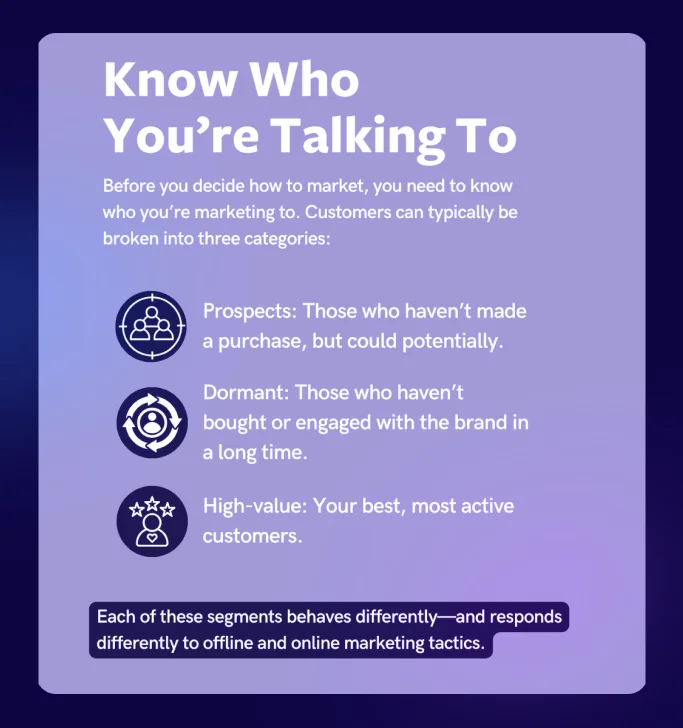
Before you hit “send,” you need to know who’s on the other side. This is the reason why your email campaign planning should include your brand’s tone, values, and purpose in your email marketing plan.
Take the time to learn about them. What do they like? What problems do they face? When do they usually open emails? This info can come from:
- website activity,
- past campaigns,
- purchase history,
- or simply asking them in a survey.
Once you understand them better, group similar people together. You’ll be able to send emails that feel personal, not generic blasts. This makes your campaigns stronger right from the start.
Step 5: Stay True to Your Brand
Every email you send is a chance to show who you are as a brand. This is the reason why you should use your email marketing plan to display your voice, values, and purpose as a company.
When your emails consistently look and sound like your brand, same tone, same message, it builds trust.
People begin to know you, to remember about you, and believe in you and what you represent.
This means that you should establish your mission, message, as well as personality of your brand before coming up with the blueprint of your campaigns.
Share these with your team, so everyone will remain in line and your emails will always sound like you.
Step 6: Plan What You’ll Say (and When)
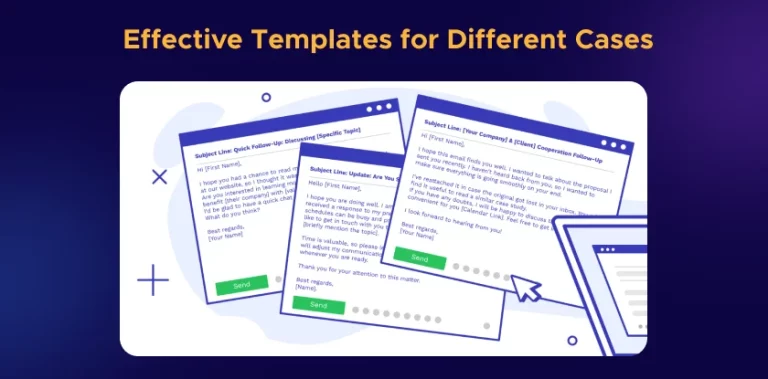
Email is not all about sending pretty messages, but sending the correct message at the correct time. That’s where a content plan comes in.
Start with the different email types that you will be sending, like welcome emails, offers, reminders/follow, thank-you emails, or requests to give feedback.
Every single type ought to have a role and align with your marketing objectives. A personal email approach helps you connect directly with your audience and keep communication meaningful.
Then choose where to place what. For example, promo emails show special offers, whereas retention emails require a more pleasant and helpful tone.
Step 7: Stick With the Plan (But Stay Flexible)
Creating an email marketing plan is just the start; however, the actual work starts after designing.
Your plan should guide your team, but not something hard to live with. Your email strategy should grow as the behavior of the customers changes and new trends emerge.
Something that has worked yesterday may not work now.
Do regular checks. Identify what works and what could be done better for your team. The more often you update and adjust your plan, the more effective it will be.
Conclusion
When you email without a strategy, it is like sending darts in the dark. You may make the hit sometimes, but you will miss most of the cases.
With a clear email marketing plan, you’re not guessing anymore. You are aware of the purpose, the audience, and the idea. That’s how you make simple emails work for your business.
